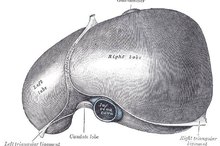Lisinopril & Elevated Liver Enzymes
Lisinopril is a prescription medication that belongs to class of medications called the angiotensin-converting enzyme inhibitors, or ACE inhibitors. The drug is used alone or in combination with other drugs to treat high blood pressure. It is also used for the treatment of congestive heart failure. Lisinopril is often administered to patients within 24 hours of a heart attack to improve survival. Your physician can determine if lisinopril is right for you.
Action of Lisinopril
Lisinopril blocks the angiotensin concerting enzyme to prevent the conversion of angiotensin I to angiotensin II. Angiotensin II constricts blood vessels and stimulates the release of a chemical called aldosterone. Aldosterone leads to the retention of sodium and water, which can elevate the blood pressure. By blocking these actions, Lisinopril allows the blood to flow more smoothly and the heart to pump blood more efficiently, according to PubMed Health.
- Lisinopril blocks the angiotensin concerting enzyme to prevent the conversion of angiotensin I to angiotensin II.
- Angiotensin II constricts blood vessels and stimulates the release of a chemical called aldosterone.
Liver Enzymes
What Is a High GGT Level?
Learn More
The liver enzymes commonly measured in a blood test include aspartate aminotranferase, or AST, and alanine transferase, or ALT. These are known as the transaminases. Other enzymes that may be measured during a liver function test include alpha phosphatase, or ALP, and gamma-glutamyl transferase, or GGT. ALP and GGT are known as cholestatic liver enzymes. MayoClinic.com explains that liver function tests may be done to screen for liver infection or monitor the progression of a disease 1. They can also measure the severity of a disease and monitor for side effect of certain drugs.
- The liver enzymes commonly measured in a blood test include aspartate aminotranferase, or AST, and alanine transferase, or ALT.
- Other enzymes that may be measured during a liver function test include alpha phosphatase, or ALP, and gamma-glutamyl transferase, or GGT.
Cholestatic Jaundice
Cholestatic jaundice is yellowing of the skin and whites of the eyes that is caused by the blockage of bile flow in the liver. Bile is a yellow-green fluid produced by the liver and stored in the gall bladder. It contains cholesterol, bile salts and bilirubin. Bile is released into the stomach and aids in the digestion of fat. Less than 1 percent of individuals may develop this side effect, reports the “Drug Information Handbook.”
- Cholestatic jaundice is yellowing of the skin and whites of the eyes that is caused by the blockage of bile flow in the liver.
- Bile is a yellow-green fluid produced by the liver and stored in the gall bladder.
Lisinopril
Low Platelet Count & Fatty Liver Disease
Learn More
Cholestatic jaundice may produce elevated liver enzymes. According to “Pharmacotherapy: A Pathophysiologic Approach,” individuals with low albumin, which a is a protein, are more at risk of developing elevated enzymes due to cholestatic jaundice than individuals with normal albumin levels 3.
Monitoring
You should get regular check ups and keep all physician appointments in order to ensure proper monitoring. Liver function tests are not recommended as part of the monitoring parameters for lisinopril; however, a routine blood test can show elevated enzymes 1. A physician can address any issues if an abnormal level is detected.
Related Articles
References
- MayoClinc.com: Liver Function Tests
- "Drug Information Handbook"; Charles F. Lacy, Lora L. Armstrong, et al.; 2009
- "Pharmacotherapy: A Pathophysiologic Approach"; Joseph T. Dipiro, Robert L. Talbert, et al.; 2008
Writer Bio
Karla Casco began writing in 2010, focusing her work on diseases and treatments and their side effects. She has also created patient handouts, PowerPoint presentations and journal clubs. Karla has a doctorate in pharmacy from St. John's University and holds a pharmacy license for the state of New York.








